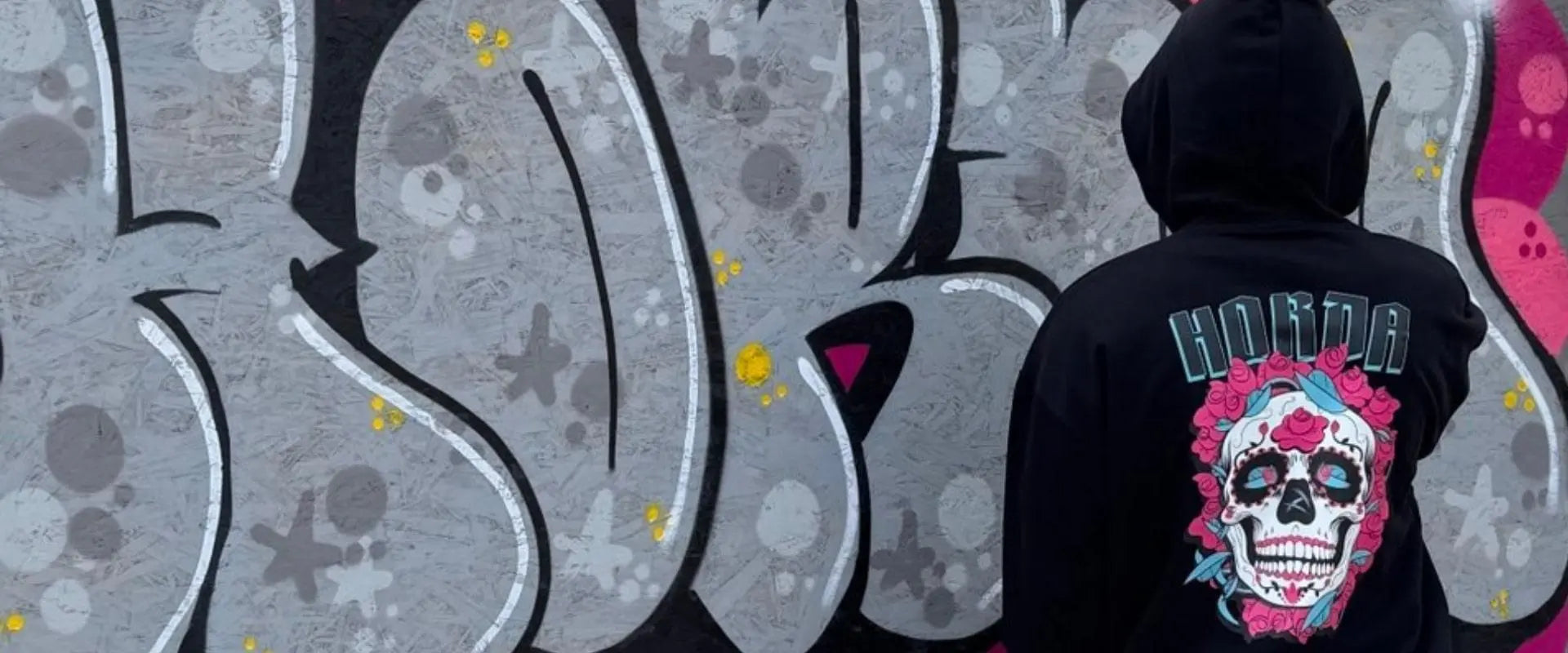What Does Streetwear Mean?
Introduction
Streetwear is much more than just a style of clothing; it represents a culture, a movement, and a form of expression rooted in the streets of major cities. This article will explore the origins, distinctive elements, evolution, and social impact of streetwear, seeking to understand what it really means to wear streetwear today.
Origins of Street Wear
70s and 80s: The Roots
Streetwear has its origins in the 1970s and 1980s, when youth culture began to emerge in urban settings. The main influences came from hip-hop, surfing, and skateboarding. Brands like Stüssy, founded by Shawn Stüssy, began creating T-shirts and accessories that reflected the lifestyle of these subcultures. 1980s fashion trends, along with punk and hip-hop music, helped shape the aesthetic of streetwear.
Rap and Graffiti
Rap music and graffiti art played a key role in popularizing this new form of expression. Artists like Run-DMC and LL Cool J not only revolutionized music, but also influenced fashion, featuring sneakers and streetwear in their performances and music videos. Graffiti, on the other hand, brought a visual and artistic element that turned the streets into a canvas for creativity.
Characteristics of Street Wear
Comfort and Functionality
One of the most popular aspects of streetwear is its focus on comfort and functionality. Garments are often made of soft, durable materials, such as cotton and denim, and are designed to allow freedom of movement. Oversized t-shirts, hoodies, and baggy pants are some of the iconic pieces that characterize this style.
Graphics and Design
Graphics are a distinctive element of streetwear. Brands often use bold logos, provocative slogans, and artwork to convey messages and tell stories. Printed T-shirts and hoodies thus become a form of visual communication, allowing wearers to express their personality and opinions.
Collaborations and Limited Editions
In recent years, collaborations between streetwear and luxury brands have gained considerable attention. These partnerships, such as the one between Supreme and Louis Vuitton, have led to the creation of exclusive, limited-edition collections that merge the worlds of luxury and streetwear, further broadening its appeal.
The Evolution of Street Wear
1990s: The Diffusion
With the advent of the 1990s, streetwear began to spread further, thanks in part to the expansion of hip-hop culture and the popularity of sneakers. Brands like Nike and Adidas began collaborating with artists and designers, bringing streetwear fashion to a wider audience. Specialty shops and pop-up stores began to pop up in cities, offering hard-to-find items and creating spaces for enthusiasts to gather.
2000s: Globalization
In the 2000s, streetwear underwent a veritable globalization. Thanks to the advent of the internet and social media, trends spread rapidly across the globe. Emerging brands and independent designers found a platform to showcase their creations, giving rise to an increasingly diverse and accessible fashion scene.
Today: Street Wear and Sustainability
Today, the streetwear landscape is constantly evolving. Sustainability is an increasingly important topic. Consumers have become more aware of the environmental impact of fashion, and many brands are seeking to adopt more eco-friendly practices, using recycled materials and promoting ethical production.
Social and Cultural Impact
Expression of Identity
Streetwear is often seen as a way to express one's identity. Through clothing, people can communicate their cultural background, passions, and beliefs. This style has become a means to address social and political issues, with many brands using their platforms to raise awareness on important issues.
Inclusivity and Diversity
Another significant aspect of streetwear is its inclusivity. This style embraces a wide range of cultural influences, encouraging diversity and authenticity. It isn't limited to a single demographic, but appeals to people of all ages, races, and backgrounds, creating a global community united by a passion for fashion.
The Role of Social Media
Social media has played a crucial role in the spread of streetwear. Platforms like Instagram and TikTok have allowed enthusiasts to share their looks, discover new trends, and connect with others. Influencers and fashion bloggers have helped give visibility to emerging brands and promote alternative styles, making streetwear more accessible than ever.
In short, streetwear is a cultural phenomenon that goes beyond simple clothing. It represents a way of life, a means of expression, and a reflection of contemporary society. With its deep roots in urban culture and its constant evolution, streetwear will continue to influence fashion and youth culture for years to come. Wearing streetwear today means not just following a trend, but also being part of a movement that celebrates diversity, creativity, and authenticity.

